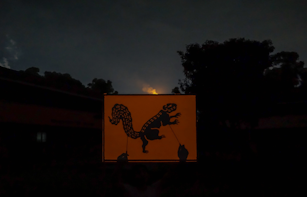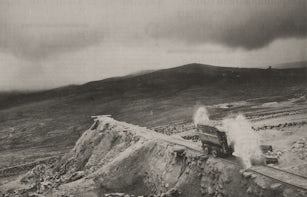‘The Potosi Principle’ – Alice Creischer, Max Jorge Hinderer and Andreas Siekmann – full video
On 8 February 2012, Alice Creischer, Andreas Siekmann and Max Jorge Hinderer reflected upon their controversial exhibition ‘The Potosí Principle’, in a discussion at Central Saint Martins College of Art and Design, moderated by Afterall’s Melissa Gronlund. You can view a video of the event here.
Our project is about bringing to mind that modern European society and its economic system cannot be conceived without its colonial conditionality and crimes. It is all about the fact that this conditionality has prevailed and continues to prevail everywhere. This dynamism discharges a mass production of images that are first shipped to the colonies, where they then produce their own images. When we show some of these pictures here we want them to bear witness to the fact that cultural hegemony is not a symbolic dimension but is instead linked to violence […] we can claim that there are connections between the function of colonial painting and the function of colonial painting and the function that art now assumes in vesting the new elites of globalization with legitimacy.
-Alice Creischer, Max Jorge Hinderer and Andreas Siekmann
Alice Creischer, Max Jorge Hinderer and Andreas Siekmann, exhibition guide for ‘The Potosí Principle’ at HKW, How Can We Sing the Song of the Lord in an Alien Land?, Berlin: Haus der Kulturen der Welt, 2010, p.4.
On 8 February 2012, Alice Creischer, Andreas Siekmann and Max Jorge Hinderer reflected upon their controversial exhibition ‘The Potosí Principle’, in a discussion at Central Saint Martins College of Art and Design, moderated by Afterall’s Melissa Gronlund.
‘The Potosí Principle’ addressed the circulation of art and wealth during Spanish colonial rule and was shown at the Museo Nacional Centro de Arte Reina Sofía, Madrid (Summer 2010), and Haus der Kulturen der Welt, Berlin (Winter, 2010), before travelling to the Museo Nacional de Arte and the Museo Nacional de Etnografía y Folklore in La Paz (Spring 2011).
Potosí, the famous silver-mining city in what is today Bolivia is synonymous with immense wealth and unbridled exploitation. It was the capital of the mining industry in Latin America from the sixteenth to the eighteenth century and played a crucial role in the development of European capitalism and the migrations associated with it. Even today, the expression ‘vale un Potosí’ (‘worth a fortune’) is commonly used in Spanish.
‘The Potosí Principle’ offered a critical approach to the Bicentenario – the two hundredth anniversary of the independence movement in Latin America. It addressed the relationship between trade structures and ways of thinking in Latin America and Europe and their social effects on both continents, both before and after the citizens’ revolutions of the nineteenth century.
This event was a collaboration between Afterall, Iniva and Central Saint Martins Research: Exhibitions: histories, practices. Supported by the Goethe Institut.


